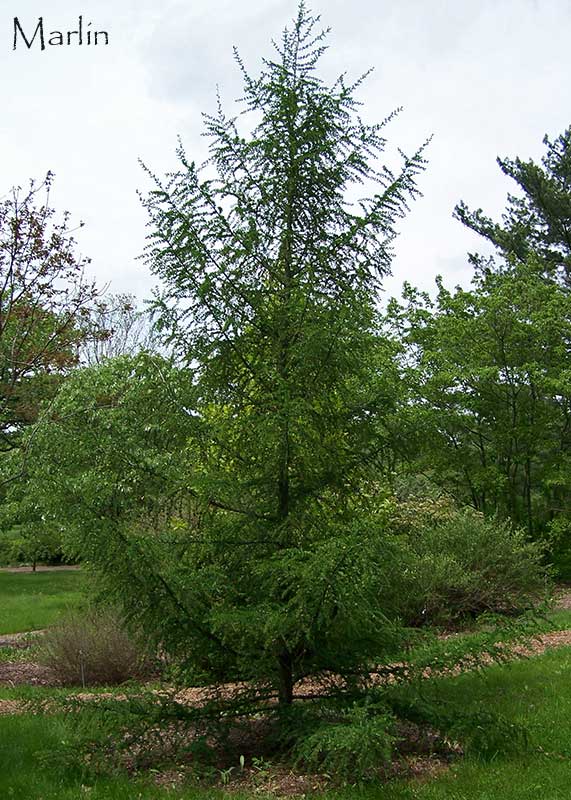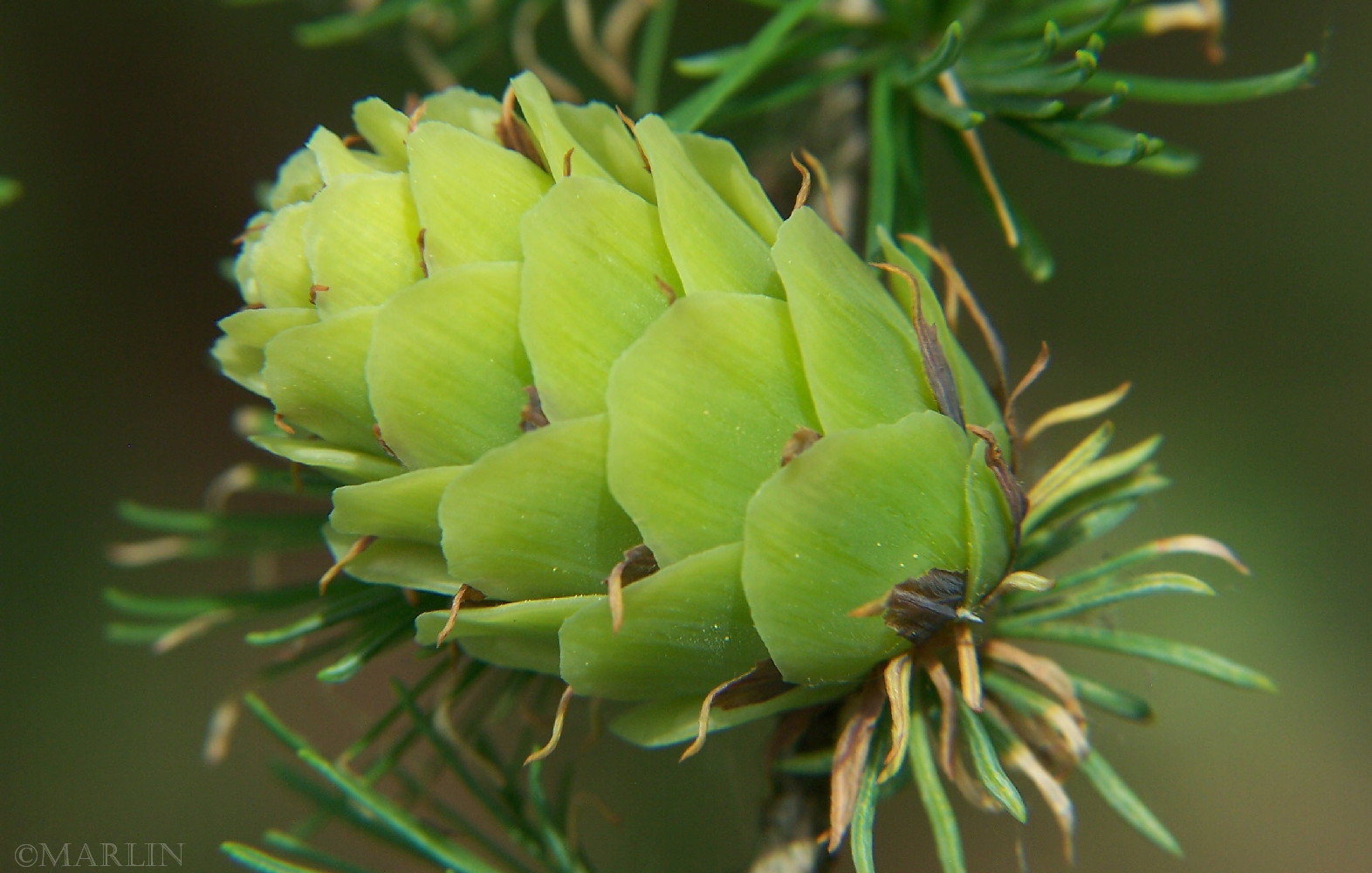Prince Rupprecht Larch – Larix gmelinii var. principis-rupprechtii
This hardy larch grows farther north than any other tree species.
Tree to 30 m tall and 80 cm dbh. In coastal areas, it usually has a twisted trunk and deformed crown. Young shoots are reddish-brown, covered with dense reddish dawn. Leaves to 3 cm long. Cones to 3 cm long, on short shoots with leaves. Each cone has up to 50 scales. Seed scales rounded, velvety. Pollination in April-May, seeds mature in August-October (Harkevich and Kachura 1981). (1)
Larches are conifers in the genus Larix, in the family Pinaceae. They are native to much of the cooler temperate northern hemisphere, on lowlands in the far north, and high on mountains further south. Larches are among the dominant plants in the immense boreal forests of Russia and Canada.
 Morton Arboretum acc. 301-90*1 – Prince Rupprecht larch, from seed, is 18 years old
Morton Arboretum acc. 301-90*1 – Prince Rupprecht larch, from seed, is 18 years old
They are deciduous trees, growing from 15-50 m tall. The shoots are dimorphic, with growth divided into long shoots typically 10-50 cm long and bearing several buds, and short shoots only 1-2 mm long with only a single bud. The leaves are needle-like, 2-5 cm long, slender (under 1 mm wide). They are borne singly, spirally arranged on the long shoots, and in dense clusters of 20-50 needles on the short shoots.
The needles turn yellow and fall in the late autumn, leaving the trees leafless through the winter. Larch cones are erect, small, 1-9 cm long, green or purple, ripening brown 5-8 months after pollination; in about half the species the bract scales are long and visible, and in the others, short and hidden between the seed scales. Those native to northern regions have small cones (1-3 cm) with short bracts, with more southerly species have longer cones (3-9 cm), often with exserted bracts, with the longest cones and bracts produced by the southernmost species in the Himalaya. [3]
Environmental: ornamental; revegetator. Materials: gum/resin; wood. Native to ASIA-TEMPERATE: Soviet Far East: Russian Federation – Primorye; China: China – Jilin, Liaoning; Eastern Asia: Korea. Synonyms: (=) Larix koreana Nakai, nom. nud. (previously associated with 1 accession) (≡) Larix olgensis A. Henry (basionym) (2)
References:
1. The Gymnosperm Database Larix gmelinii var. olgensis
2. USDA, ARS, National Genetic Resources Program. (GRIN) [Online Database]
3. Wikipedia, The Free Encyclopedia, Larch
4. Morton Arboretum accession 301-90*1, photographed by Bruce Marlin
Trees Index | Pine Family | Beech, Oak | Nut Trees | Birch Family | Magnolias
Tree Encyclopedia / North American Insects & Spiders is dedicated to providing family-friendly educational
resources for our friends around the world through large images and macro photographs of flora and fauna.



